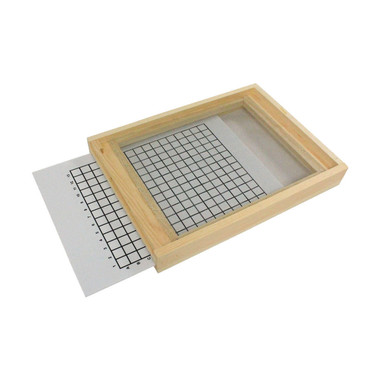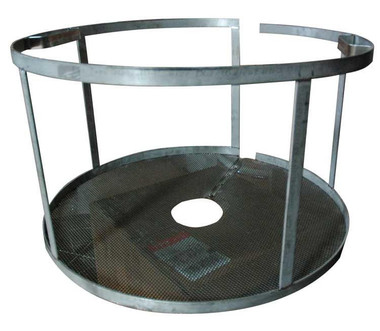Product Details
Description
This sticky board can be used directly or with a screen to aid in monitoring or diagnosing varroa infestations within honey bee colonies. Conveniently printed with grid lines, this sticky board simplifies determining the number of mites present, making it an indispensable aid for beekeepers.
If used in conjunction with a screened bottom board, the sticky board effectively replaces it, eliminating the need for additional board barriers. The efficient use of this sticky board makes it an affordable anti-varroa mite solution, even when you buy replacement sticky board sets.
When To Consider Varroa Mite Control
Count the number of mites on the sticky board to decide on varroa mite control. Here’s how to check the mite population in the sticky board to diagnose the situation:
- Use this sticky board with conveniently printed grid lines to sample at least 10% of hives in large apiaries or at least three hives in smaller ones.
- Choose unusually large and small colonies and those at the row ends of the screened bottom board.
Depending on the number of mites present in the conveniently printed grid lines of the sticky board, you may be dealing with a light varroa mite presence or a varroa infestation. Here are considerations:
- If mites are counted at low levels or not at all in the bottom board, treatment may be delayed or not required. This results in fewer chemicals being applied in the hive, a reduced chance of mites becoming resistant to the treatment chemicals, and fewer expenses.
- If mites present are at low to moderate levels in the bottom board, elimination can be done to maintain honey production. This will diminish overwintered colony losses.
When To Use Sticky Boards For Varroa Mites
The best time to detect varroa mites with the sticky board is when brood rearing is at its lowest. This ensures more accurate population counting on the boards and helps determine the necessary interventions to maintain the colony's health.
Storage
To maintain efficacy, store the sticky boards in a cool place in the provided bag. This includes your original sticky board and your replacement sticky board sets.
Directions for Using Sticky Board
Before you use your sticky board or purchase your replacement sticky board sets, follow these instructions carefully:
- Bring the sticky boards to room temperature. Start at the unglued margin and carefully peel off the sticky board paper. In the field, ensure traps remain warm until the sticky board paper is removed.
- Record the hive number and the date you insert it on the sticky board. Use a screened bottom board to prevent bees from contacting the adhesive surface of the sticky board.
- If you use a standard bottom board or pallet, place the screen (included in the DC-680 Sticky Board with Screen) over the sticky surface to keep the bees from sticking to the surface. If you have a screened bottom board, you can simply use a replacement sticky board as it is.
- Slide the trap through the hive's entrance on the bottom board. Use thumbtacks to keep the trap on the screened bottom board flat if desired.
- Put an approved pesticide in the hive according to the label instructions.
- Remove the trap after 24 hours. Leaving the trap for longer than 24 hours will result in a heavy buildup of hive debris, making it difficult to diagnose the number of mites.
- Cover the sticky board with clear plastic wrap, and count the varroa mites on the sticky board trap.
- Purchase a replacement sticky board to do this process again.
In the Spring
- If no mites are detected in the screened board, postpone treatment and retest in the fall. This ensures you maximize your replacement sticky board.
- If you monitor low mite populations (fewer than 100), delay treatment until fall.
- Remove honey supers and consider treating immediately for moderate levels (between 100 to 1,000).
- If mite levels are high (over 1,000), begin immediate treatment after removing honey supers. This can be considered a varroa infestation.
- Repeat this process with a replacement sticky board in conjunction with the trap to slide through the hive entrance as often as needed.
In the Fall
- If you monitor any mites, treat the colony immediately. Varroa mites can severely impact honey bees, affecting their health and the hive's overall productivity.
- Repeat this process with a replacement sticky board as often as necessary.
By using the sticky board in conjunction with scheduled inspections, beekeepers can effectively monitor and treat varroa infestations. Regardless if you use a replacement sticky board or not, you can safeguard your cluster of bees from the detrimental effects of mites.
Specification
- 0.60 x 13.20 x 17.10 inches
- 0.30 LBS












